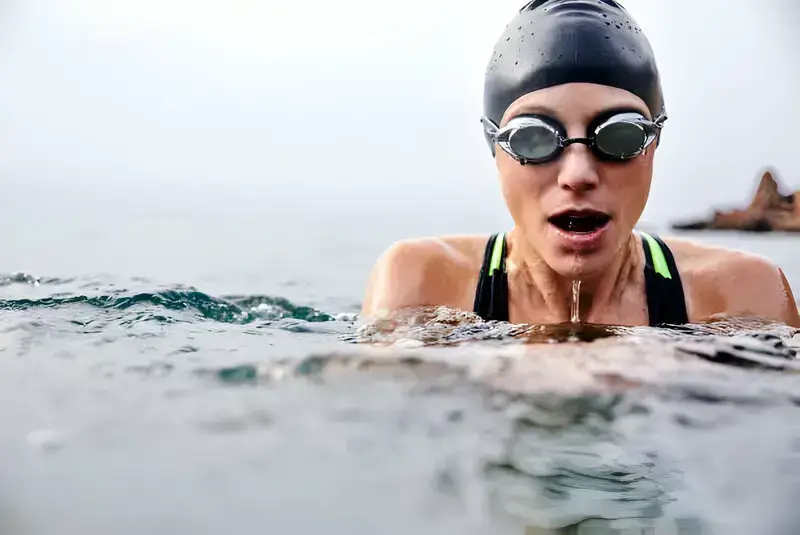How to Choose the Right Swim Training Gear for Your Goals

Swim Training Gear
Swimming is not just a sport; it’s a holistic exercise that engages almost every muscle in your body, offering a plethora of health benefits. Whether you’re a competitive swimmer, a fitness enthusiast, or someone looking to improve their cardiovascular health, having the right swim training gear is essential. This comprehensive guide will delve into the intricacies of selecting the perfect swim training gear tailored to your goals.
Understanding Your Goals
Before diving into the vast sea of swim training gear options, it’s crucial to identify your goals. Are you training for a competitive swimming event? Do you aim to enhance your endurance, speed, or technique? Or are you simply looking for gear to elevate your recreational swimming experience? Understanding your objectives will streamline the gear selection process and ensure you invest in items that align with your aspirations.
Essential Swim Training Gear
Swimwear
- Swimsuits come in various styles, such as briefs, jammers, and one-piece suits. Competitive swimmers often prefer sleek, form-fitting suits designed for minimal drag, while recreational swimmers might prioritize comfort and durability.
- For women, options like one-piece suits with thin straps offer greater mobility, while thicker straps provide additional support. Men might opt for jammers or briefs depending on personal preference and comfort.
- Consider materials like chlorine-resistant fabric for longevity if you swim frequently in pools.
Goggles
- Goggles are indispensable for clear vision underwater and protection against chlorinated water or saltwater irritation.
- Look for goggles with adjustable straps for a snug fit, anti-fog coating for clear vision, and UV protection for outdoor swimming.
- Depending on your goals, choose goggles with different lens tints. Clear lenses are suitable for indoor swimming, while tinted lenses offer glare reduction and enhanced visibility in bright outdoor conditions.
Swim Caps
- Swim caps minimize resistance in the water by keeping hair streamlined and reducing drag.
- Silicone caps are durable and provide a snug fit, while latex caps offer affordability and stretchability.
- Consider bright-colored caps for increased visibility in open water or crowded pools, especially for safety during outdoor swims.
Swim Fins
- Swim fins or flippers can help improve leg strength, ankle flexibility, and overall propulsion in the water.
- Choose fins with comfortable foot pockets and adjustable straps for a secure fit. Opt for shorter fins for more controlled movements and longer fins for increased propulsion.
- If you’re a beginner, start with shorter fins to avoid overexertion and focus on improving technique before transitioning to longer fins.
Kickboards and Pull Buoys
- Kickboards and pull buoys are essential tools for isolating and strengthening specific muscle groups during swim training.
- Kickboards aid in lower body workouts, focusing on leg strength and kicking technique.
- Pull buoys support the upper body, allowing swimmers to concentrate on arm strokes and proper body positioning.
- Look for buoyant, durable materials that offer sufficient support and resistance in the water.
Choosing Gear Based on Specific Goals
Endurance Training
- For endurance training, prioritize gear that enhances comfort and reduces fatigue over long distances.
- Opt for high-quality, chlorine-resistant swimsuits with streamlined designs to minimize drag.
- Consider investing in swim caps and goggles with anti-fatigue features to reduce strain during extended swim sessions.
- Additionally, incorporate swim fins to vary your training routine and build endurance through resistance.
Speed Improvement
- To improve speed, focus on gear that maximizes propulsion and minimizes resistance in the water.
- Choose sleek, hydrodynamic swimsuits with minimal seams and drag-reducing features for competitive swimming.
- Experiment with swim fins of varying lengths to find the optimal balance between speed and control.
- Incorporate interval training sessions with gear like swim parachutes or drag suits to increase resistance and enhance power output.
Technique Refinement
- If refining technique is your goal, prioritize gear that facilitates proper body alignment and stroke mechanics.
- Utilize kickboards and pull buoys to isolate specific movements and focus on stroke technique without distraction.
- Consider investing in underwater swim mirrors or waterproof cameras to visually analyze and refine your form.
- Incorporate tools like snorkels or swim paddles to isolate specific aspects of your stroke and fine-tune technique under the guidance of a coach or experienced swimmer.
Injury Prevention and Rehabilitation
- If recovering from an injury or aiming to prevent injuries, select gear that provides ample support and reduces stress on vulnerable areas.
- Look for swimsuits with built-in compression features to support muscles and joints during rehabilitation.
- Consider using pull buoys or snorkels to modify swim strokes and alleviate strain on injured areas while maintaining cardiovascular fitness.
- Invest in buoyancy aids like swim belts or vests to reduce impact on joints and facilitate low-impact workouts during recovery.
Additional Gear Considerations
Training Aids
- Training aids such as swim paddles, snorkels, and resistance bands can add variety to your workouts and target specific muscle groups.
- Incorporate these aids gradually into your training regimen to avoid overexertion and ensure proper technique.
- Consult with a coach or swim instructor to determine the most suitable training aids based on your goals and skill level.
Accessories
- Accessories like swim bags, towels, and water bottles are essential for convenience and comfort during swim sessions.
- Choose a spacious, waterproof swim bag to keep your gear organized.
- Invest in quick-drying towels and insulated water bottles to stay dry and hydrated before and after your swims.
Conclusion
Swim training gear plays a pivotal role in achieving your swimming goals, whether you’re aiming for competition success, fitness milestones, or simply enjoying recreational swims. By understanding your objectives and selecting gear tailored to your needs, you can enhance your performance, improve your technique, and maximize the health benefits of swimming.
Remember, the right swim training gear isn’t just about functionality; it’s about empowering you to dive deeper, swim faster, and reach new horizons in your aquatic journey. So, dive in, explore the options, and equip yourself with the gear to propel you toward your swimming goals confidently and enthusiastically.
For more exciting news, visit: TimesInform










